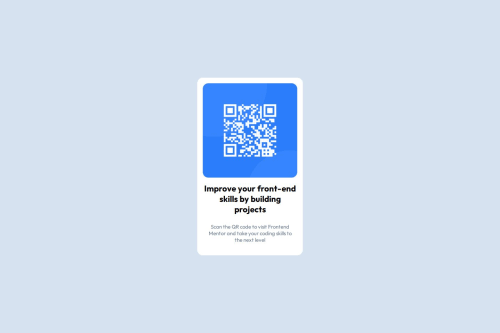Submitted about 1 year agoA solution to the QR code component challenge
Mobile-first solution using CSS Flexbox
@djklive

Solution retrospective
What are you most proud of, and what would you do differently next time?
I am proud that i was able to finish the challenge with no major problem
What challenges did you encounter, and how did you overcome them?The challenge that i encounter was to center verticaly the qr code component and to overcome it i just have to specify a height to all my body
What specific areas of your project would you like help with?i would like help space between my element in my qr code component
Code
Loading...
Please log in to post a comment
Log in with GitHubCommunity feedback
No feedback yet. Be the first to give feedback on djklive's solution.
Join our Discord community
Join thousands of Frontend Mentor community members taking the challenges, sharing resources, helping each other, and chatting about all things front-end!
Join our Discord